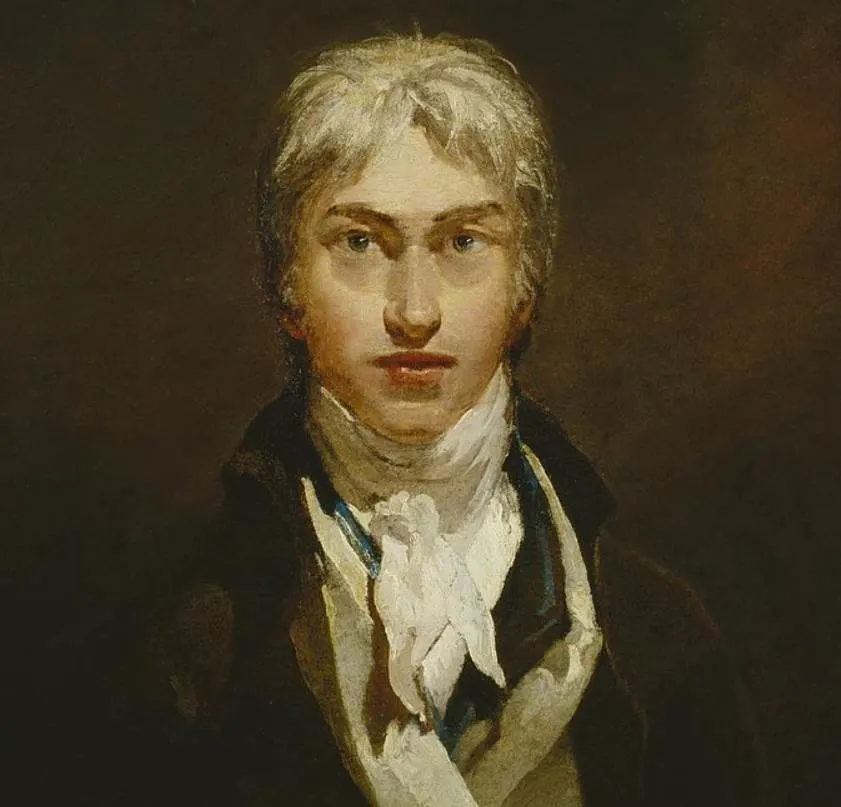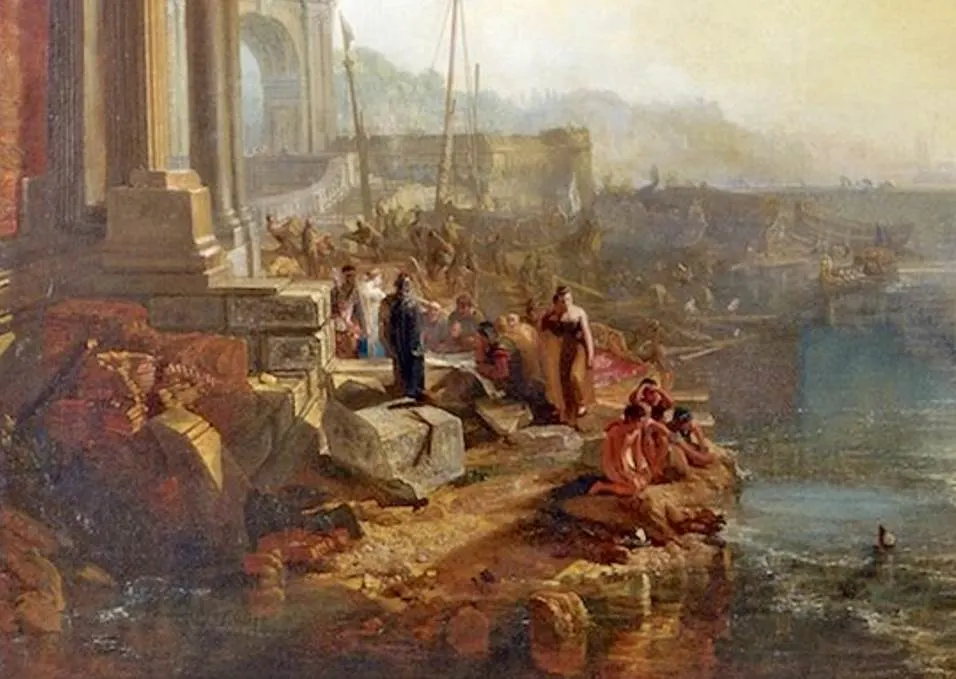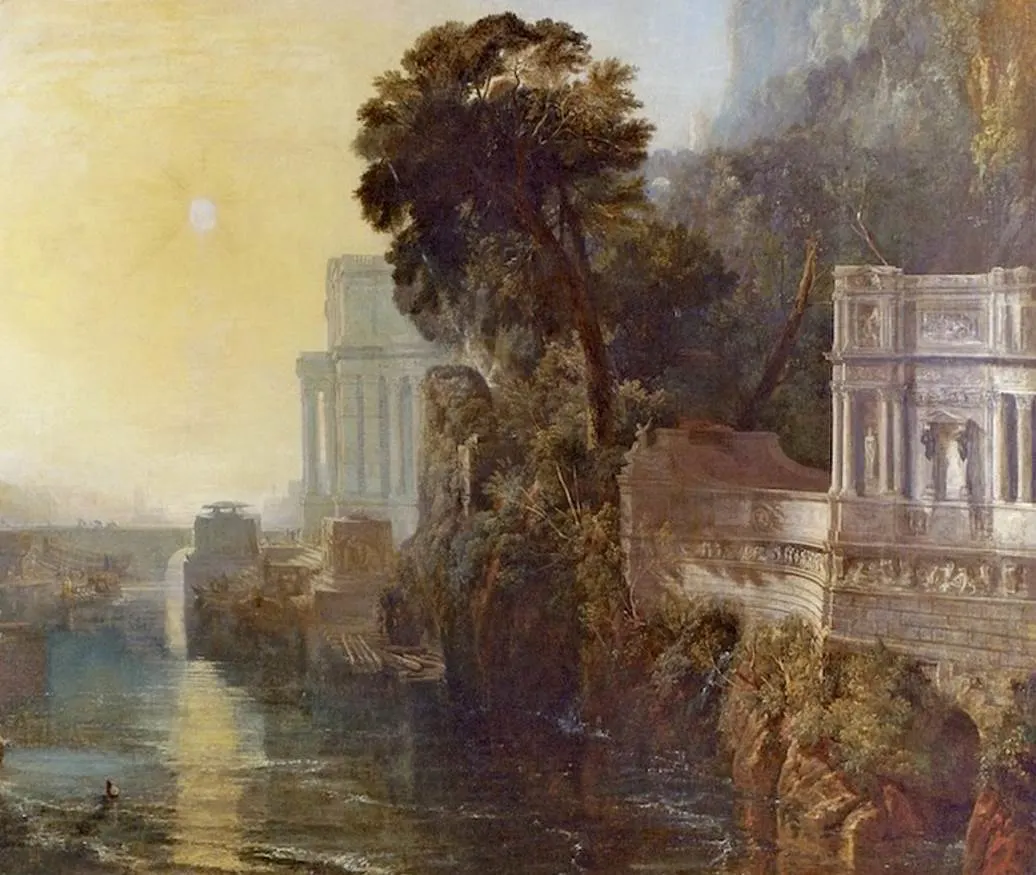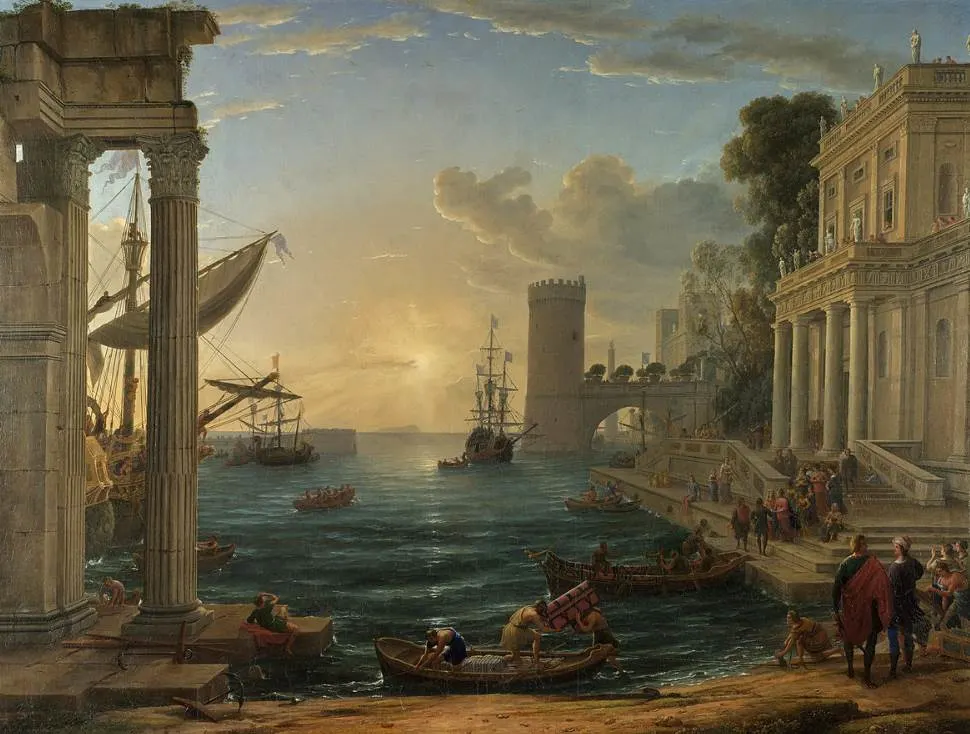When one of the most prolific and successful English artists described a painting as his Magnum Opus in 1815, he simply couldn’t let it go.
J.M.W. Turner (1775-1851) was a leading artist of the Romantic era and he left behind over 550 oil paintings. Choosing this one as his favorite meant a lot.
In this article, you’ll discover some of the most interesting facts about Dido Building Carthage, one of Turner’s ultimate masterpieces for several reasons.
1. It was completed nearly 2 decades after Turner exhibited his first work
Joseph Mallord William Turner was a child prodigy who enrolled at the Royal Academy in London in 1789. He was only 15 years old at the time and was bound to become a great artist.
He already produced numerous watercolors which were exhibited at the academy every year. It wasn’t until 1796 that he exhibited his first oil painting, a work titled “Fishermen at Sea.”
This moonlit marine painting depicts the Needles at the Isle of Wight and has been widely praised by art critics.
Turner traveled across Europe in the early 19th century and absorbed various styles of renowned artists. This resulted in a distinctive style that was widely appreciated by art patrons.
He completed Dido Building Carthage in 1815, almost 2 decades after his first oil painting was exhibited at the Royal Academy.

2. The painting depicts the story of the foundation of a major ancient city-state
The painting depicts Dido, the legendary founder of the Carthaginian city-state in modern-day Tunisia, North Africa, as she is directing the architects of the city.

The story was derived from “Aeneid,” a work by the ancient Roman poet Virgil. It was written during the region of the first Roman Emperor Augustus between 29 and 19 B.C.
There are no direct sources for Dido and all we know about her life is from ancient Greek and Roman writings. Virgil’s epic poem describes her life in great detail.

3. Dido is depicted in the bottom left corner among several symbolic elements
Turner depicted Dido in the bottom left corner and can be seen among the builders who are working on constructing the city’s major structures.
The man facing the viewer is believed to be Aeneas, the main character in Virgil’s poem and Dido’s lover. Facing the viewer is probably a reference to the fact that he ends up leaving Dido, resulting in her suicide.
Children can be seen playing with toy boats in the after, a reference to the fragile naval capabilities of the Carthaginian Empire.
On the opposite bank of the river, we can see the tomb of Dido’s husband Sychaes. This was a man who was murdered by Dido’s brother from whom she had fled herself and his tomb represents the eventual Fall of Carthage.

4. The dominant sunrise may have been inspired by a natural phenomenon
The incredibly bright sunrise that dominates the upper section of the composition is a symbolic element that represents the rise of Carthage.
This is likely not the only reason why Turner made this sunrise so bright, although he included it in several of his other paintings as well.
1815 was the year that the most powerful volcanic eruption in recorded history took place. The Eruption of Mount Tambora in modern-day Indonesia had effects all around the world.
The result in Europe was a much brighter sunrise and sunset for several months after the event took place in April of 1815 and it might have inspired Turner as well.

5. Turner was probably inspired by a 17th-century French landscape painter
Although the painting was completed several years after Turner returned from his extended trip around Europe, he was still inspired by several artists whose works he came across.
One of the artists he learned a great deal from was Claude Lorrain (1600-1682), a French artist who lived in the 17th century.
This is emphasized by the fact that Turner’s main venture in printmaking titled “Luber Studiorum” was based on one of Lorrain’s books called “Liber Veritatis.”
Lorrain was a landscape painter of the Baroque era and completed several paintings that have a similar composition as Turner’s Dido Building Carthage.
Especially his painting “The Embarkation of the Queen of Sheba” which was completed in 1648 features a strikingly similar composition.

6. Turner produced the sequel to this painting just 2 years later
The events in the painting presumably took place in the early 9th century B.C., shortly after Carthage was established by colonists from Tyre (modern-day Lebanon) led by Dido.
At its peak in the 4th century B.C., Carthage was one of the largest metropolises in the world and the center of the Carthaginian Empire.
The Romans gradually expanded their territory and multiple conflicts between the two superpowers in the region happened. This culminated in the Fall of the Carthaginian Empire in 146 B.C.
J.M.W. Turner completed an accompanying painting for Dido Building Carthage in 1817 titled “The Decline of the Carthaginian Empire.
In this painting, the sunset can be seen as an allegory for the looming demise of the once so powerful Empire.

7. How big is Dido Building Carthage by J.M.W. Turner?
Turner completed over 550 oil paintings during his career and many of these were large. This includes this monumental painting.
Dido Building Carthage by J.M.W. Turner is an oil on canvas painting that has dimensions of 155.5 x 230 centimeters (61.2 x 91 inches).
8. Where is the painting located today?
Of all the paintings in Turner’s extensive oeuvre, he loved this one the most. He even called it his chef-d’oeuvre and he had great plans for it.
When he wrote the first version of his will in 1829, he remarked that he wanted to be buried together with this painting. The eccentric artist later changed his mind and decided he wanted to donate it.
He subsequently wanted the painting to be hung together with Claude Lorrain’s Embarkation of the Queen of Sheba and his other work depicting the demise of the Carthaginians.
It was eventually part of the disputed Turner Bequest and became part of the collection of the National Gallery in 1856.
Just as he envisioned, Turner’s masterpiece hangs together with some of the works of his idol Claude Lorrain at one of the most popular museums in London.

